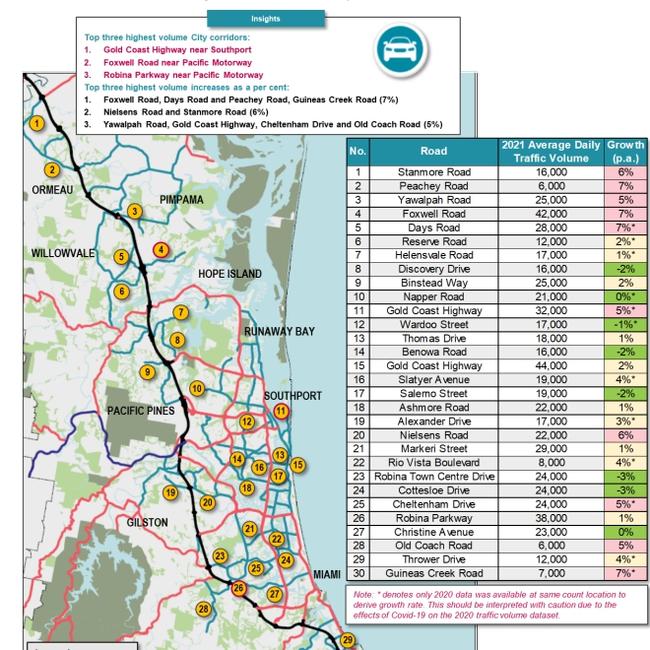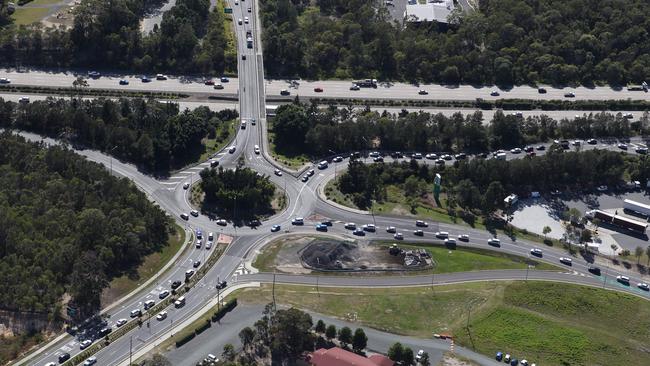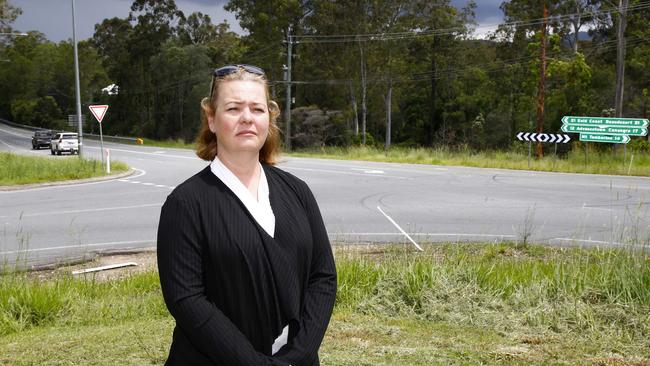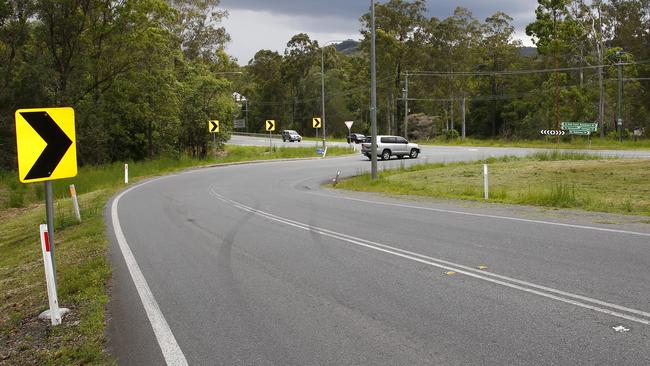Revealed: The Gold Coast’s most congested roads are in the suburbs
The Gold Coast’s worst road for congestion is in one the city’s fast growing suburbs, according to a new report. FIND OUT WHERE
Gold Coast
Don't miss out on the headlines from Gold Coast. Followed categories will be added to My News.
THE Gold Coast’s road congestion hot spots are no longer in the CBD or the tourist strip, but in the city’s fast-grow north, a new report shows.
A State of the Transport Network 2021 report to be discussed by councillors on Tuesday shows the Gold Coast Highway at Southport remains the city’s busiest road with daily traffic volume of 44,000 vehicles.
But it is about to be gazumped by Foxwell Road at Coomera, which carries 42,000 each day.

The amount of traffic on the major Coomera arterial road, up seven per cent year on year, is increasing at more than triple the rate of the highway through the CBD.
Five northern roads feature in the fastest growth traffic areas. They are: Stanmore Road (six per cent), Peachey Road (seven per cent), Yawalpah Road (five per cent), Foxwell Road (seven per cent) and Days Road (seven per cent).
“The city’s second-highest traffic volume corridor is Foxwell Road, narrowly behind Gold Coast Highway in Southport. At its current rate of growth, it is expected that Foxwell Road will be the city’s highest traffic volume local road corridor by 2022,” the report said.
The council and the state government are continuing to hold talks on funding upgrades for the major northern roads that will link with the planned Coomera Connector or second M1.

“This corridor will provide an interface with the northern portal of the Coomera Connector, and transfer of ownership of Foxwell Road between the Pacific Motorway and Shipper Road is under negotiation with the state,” the council report said.
“A corridor study was completed in 2021 to plan for the future management of the corridor, with targeted upgrade works to improve the capacity of the section east of Shipper Drive, which will remain under city ownership.”
The traffic congestion concerns in the city’s north also highlight the lack of public transport.
“It is estimated that 40 per cent of the Gold Coast population is located 800 metres from high frequency public transport – 15 minutes or better,” the report said.
“However, there is a lack of access to public transport in the northern growth areas and suburbs west of the M1. Improving public transport in these areas remains a priority for the city.”

Killer intersection redesigned without community input
November 22, 2021
RESIDENTS in a hinterland suburb are furious that a killer intersection has been redesigned without community input.
“We were invited to a community consultation meeting in early November but a decision on the redesign had already been made and the project has gone out to tender,” said Lisa Smith, who lives 300m from the intersection of Maudsland and Beaudesert-Nerang roads.
“There’s been fatalities at this intersection. It’s dangerous and it needs to be safer.”
The Department of Transport and Main Roads said it was undertaking a $4.9m upgrade to “improve efficiency and safety, and reduce the risk of the type of severe crashes recorded at this intersection”.

This includes installing traffic signals with signalised pedestrian crossings, widening and embankment works, additional turning lanes, improvements to line of sight, bus stop relocation and new footpaths.
The speed limit on Beaudesert-Nerang and Maudsland roads will also be reduced, from 80km/h and 60km/h, respectively.
However, Ms Smith said no one who used the road daily was spoken to about their experience or asked for input ahead of the changes.
“I use that road about four times a day and don’t think traffic lights are going to help improve safety,” she said.
“During peak hours the road is congested and simply placing a left turn at any time with care lane from Maudsland Road would have been better.
“Now people turning left will have to stop at traffic signals and this will increase the backlog of cars on Maudsland Rd. It’s already a congested area at peak times.”
Ms Smith said she agreed with improvements to the line of sight, installation of footpaths and moving the bus stop, but said a roundabout would have worked better.

“Not only would it stop hoons who love to race through this area, it would ensure the traffic followed better,” she said.
“I’m no engineer, but the new design is going to affect hundreds of residents who live on Maudsland Road as they may have their driveways blocked by cars backed up during peak times,” she said.
“Surely the residents who live in the area and travel the road daily are better placed to know what does and doesn’t work, instead of just relying solely on data.”
Ms Smith said had she been consulted, she would’ve advocated for an animal corridor to protect possums, wallabies and bandicoots that often get “mowed down” by traffic travelling 90km/h along Beaudesert-Nerang road.
A Transport and Main Roads spokesman said comprehensive intersection modelling, including traffic counts and crash history analysis, was carried out to inform detailed design for the Beaudesert-Nerang Rd and Maudsland Rd intersection upgrade.
He said signalising the intersection will allow all road users to safely undertake all movements between Beaudesert-Nerang Road and Maudsland Road.

“Signalising the left turn out of Maudsland Rd will also ensure pedestrians can safely cross the intersection,” he said.
“The geography and geometry of the intersection would not accommodate a safe and functioning roundabout and would also require the resumption of private land to make it work,” he said.
In regards to consultation, the department said in October 1500 project flyers were delivered across Maudsland, Guanaba and Mount Nathan.
A community information session was also held on November 5. Another is on November 20 at 9am-12pm at Mount Nathan Shopping Centre.
“All community feedback will be considered. Construction is expected to start early next year and be completed mid to late 2022,” he said.
Member for Theodore Mark Boothman said only revealing the design once the project had gone to tender showed “utter disregard to the community and that the process is nothing but a tick and flick exercise”.
“Simply placing a left turn at any time with care lane from Maudsland Rd, not requiring motorists to stop at traffic signals, will allow for better traffic flow.”
Originally published as Revealed: The Gold Coast’s most congested roads are in the suburbs


